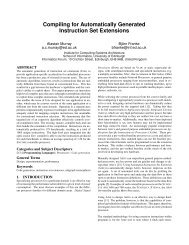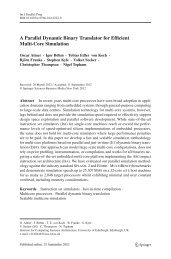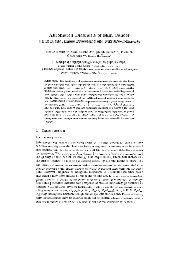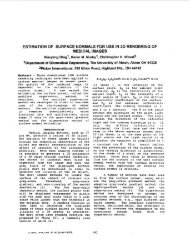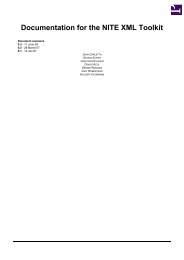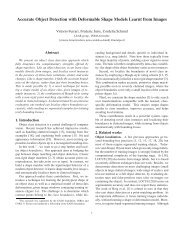WebExp2 Experimenter's Manual - School of Informatics - University ...
WebExp2 Experimenter's Manual - School of Informatics - University ...
WebExp2 Experimenter's Manual - School of Informatics - University ...
You also want an ePaper? Increase the reach of your titles
YUMPU automatically turns print PDFs into web optimized ePapers that Google loves.
1 Introduction<br />
<strong>WebExp2</strong> is a toolbox for conducting psychological experiments over the World Wide Web. This section provides<br />
an overview <strong>of</strong> <strong>WebExp2</strong> and describes the main features available, along with the advantages <strong>of</strong> conducting<br />
experiments over the web.<br />
Note: Please refer to the glossary in section 10 for explanation <strong>of</strong> terminology used in this document. Some<br />
terms, though familiar, will have specific imnport in the context <strong>of</strong> <strong>WebExp2</strong>.<br />
Client-Server<br />
one another.<br />
<strong>WebExp2</strong> is a client-server system, consisting <strong>of</strong> two separate programs which interact with<br />
• the Server is an application which you run on the web server machine which hosts the experiment files.<br />
It waits for client applets to connect to it and request experiments, whereupon it provides (serves up) the<br />
experimental files, and manages the results that are returned.<br />
• the Client is an applet which runs in the browser <strong>of</strong> the participant. It connects to the server to get the<br />
experiment, administering it to the participant and returning results to the server.<br />
Java & XML <strong>WebExp2</strong> is written in Java, and uses XML as the description language for a) defining experiments<br />
and b) storing results. There are two parts to the system: the server (an application), and the client (an<br />
applet). Java is specifically designed to be platform-independent and is particularly suited to running across<br />
the internet. So the <strong>WebExp2</strong> server can run on Windows, Linux, Unix, MacOS, and anyone with a browser<br />
can run the experimental client. As a data-description language, XML is standardised, flexible, and supports<br />
simple validation <strong>of</strong> the data.<br />
In order to get <strong>WebExp2</strong> ready for use, you need to accomplish a handful <strong>of</strong> tasks. It is a good idea to get the<br />
system working with one <strong>of</strong> the supplied paradigms, and then you can go on to designing your own experiments<br />
to run on the system.<br />
1.1 Features<br />
Experiments are designed around a sequential stimulus/response model. This model can be seen as a ‘questionnaire’<br />
where you provide a series <strong>of</strong> ‘questions’, each <strong>of</strong> which involves the presentation <strong>of</strong> stimuli and the<br />
collection <strong>of</strong> responses (via the presentation <strong>of</strong> a set <strong>of</strong> response options).<br />
1.1.1 Implemented<br />
These features are implemented in the current release <strong>of</strong> <strong>WebExp2</strong> and form part <strong>of</strong> the core functionality <strong>of</strong><br />
the system.<br />
Paradigms There are a handful <strong>of</strong> sample paradigms implemented and included with <strong>WebExp2</strong>. These can be<br />
easily modified to create your own experiments, or can be studied to provide tuition in how to achieve particular<br />
effects with the system. The following paradigms are available:<br />
• the Stroop task (parametric 2-condition)<br />
• attractiveness and pupil size (nonparametric 2-condition)<br />
• discriminant reaction times<br />
9



